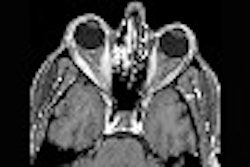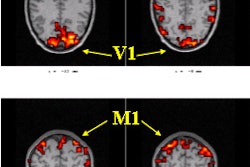Lippincott, Williams & Wilkins, Philadelphia, 2001, $19.95.
This annual guide to MR safety offers comprehensive safety testing data on metallic objects in the MR environment. It is written by Frank Shellock, Ph.D., a physiologist and adjunct professor in the department of radiology at the University of Southern California in Los Angeles. Shellock also is the creator of the MRIsafety.com Web site.
The book consists of 37 chapters focusing on various types of objects, devices, and bioimplants that might pose a hazard in the MR environment. Shellock also covers safety, terminology, and the medical devices that have been developed for interventional MR procedures. Tables list over 900 objects and what magnetic field strength was used to test them.
In addition to testing the metallic objects’ response to the magnetic field, the book covers ex vivo heat testing, looking for temperature elevations produced during routine MR procedures. One of the important conclusions from this testing is that the heat generated during an MR imaging exam does not appear to be a substantial hazard for those patients with passive metallic implants. Other testing results are listed for functional (or active) metallic implants.
Recommendations to avoid specific metallic implants based on their high ferromagnetism (and the resultant artifact on MRI) are particularly useful, especially if the typical post- surgical follow-up of the patient is to be performed primarily via MRI.
While the information collected in the guide is extensive, there are there are still a few limitations. High-field MRI units are gaining ground in the clinical setting, for example, but only four of the objects listed in the table were tested at magnetic field strengths of 3-tesla or higher.
And while the book cover features various aneurysm clips, there are no other images of these metallic objects. Given that aneurysm clips are often identified radiographically, and that many patients are not aware of their specific type of implant, the addition of photographs and/or radiographs of these common implants would be useful.
Still, the Pocket Guide offers much information that is current and useful for the practicing radiologist or radiologic technologist. Future editions will likely contain updates on testing metallic objects at higher magnetic field strengths.
To ensure maximum patient safety, it is essential to know if a metallic device or implant will be adversely affected by the strong magnetic field used in MRI. The information in this guide is applicable to all situations, whether the MR unit is operated in a hospital, a clinic, or an outpatient center. Pocket Guide offers critical information for maintaining accident-free MRI facilities. Considering the price of the book, everyone involved in MR imaging should have one.
By Dr. Douglas P. BeallAuntMinnie.com contributing writer
June 24, 2002
Dr. Beall is a staff radiologist in the musculoskeletal division, department of radiology at Wilford Hall Medical Center, Lackland Air Force Base, TX. He also is an assistant professor of radiology, department of radiology and nuclear medicine, Uniformed Services Health University in Bethesda, MD.
If you are interested in reviewing a book, let us know at [email protected].
The opinions expressed in this review are those of the author, and do not necessarily reflect the views of AuntMinnie.com
Copyright © 2002 AuntMinnie.com


.fFmgij6Hin.png?auto=compress%2Cformat&fit=crop&h=100&q=70&w=100)





.fFmgij6Hin.png?auto=compress%2Cformat&fit=crop&h=167&q=70&w=250)











